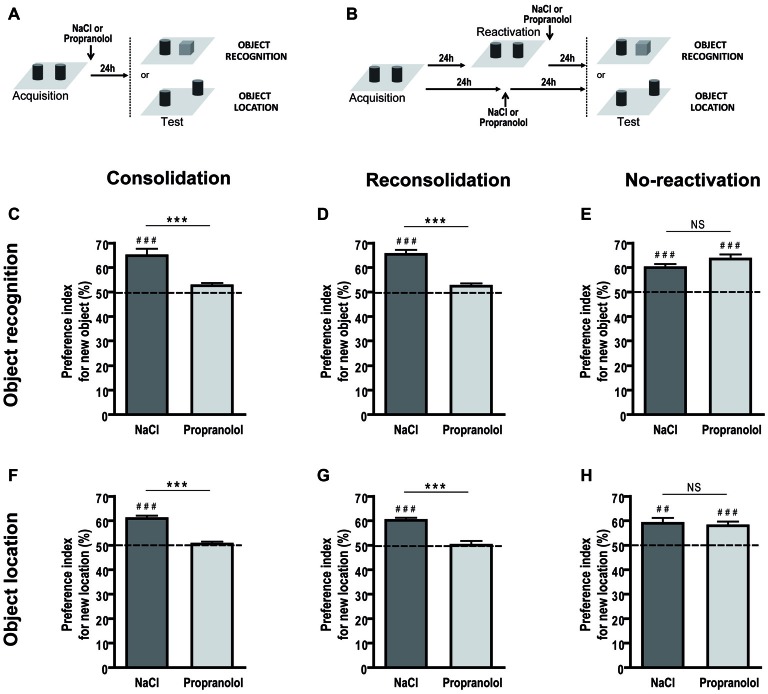Figure 4.
Propranolol impairs the memory reconsolidation in the object recognition and object location tasks. Schematics of the behavioral protocols of the object recognition and object location tasks for the consolidation (A) and reconsolidation and no-reactivation (B) procedures. Performances are expressed as the group mean (±SEM) preference index. The horizontal line represents equal exploration of the two objects. For the consolidation (n = 9 per group; C) and reconsolidation (NaCl: n = 10; Propranolol: n = 9; D) procedures of the object recognition task, control mice spent significantly more time exploring the new object than the familiar one. For the consolidation (NaCl: n = 13; Propranolol: n = 14; F) and reconsolidation (NaCl: n = 14; Propranolol: n = 13; G) procedures of the object location task, NaCl-injected mice spent significantly more time exploring the displaced object than the non displaced one. Mice with propranolol injection during consolidation or reconsolidation presented severe deficits in these two spatial tasks and were not able to distinguish the new or displaced object. For the no-reactivation procedures, NaCl- but also propranolol-injected mice showed similar preference for the familiar or non-displaced object as compared to the new or displaced object in the object recognition (NaCl: n = 7; Propranolol: n = 8; E) and object location (NaCl: n = 8; Propranolol: n = 9; H) tasks respectively. ##p < 0.01; ###p < 0.001 index vs. chance level; 50%. ***p < 0.001 NaCl vs. Propranolol; NS, non significant.

